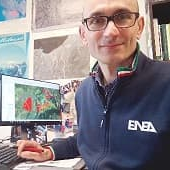Geomatics in Forestry and Agriculture: New Advances and Perspectives
A special issue of ISPRS International Journal of Geo-Information (ISSN 2220-9964).
Deadline for manuscript submissions: closed (31 December 2022) | Viewed by 61081
Special Issue Editors
Interests: land cover and land use change dynamics; satellite and UAV remote sensing; landscape analysis and interpretation; remote sensing of vegetation; geographic object-based image analysis; machine learning
Special Issues, Collections and Topics in MDPI journals
Interests: geomatics applications; land planning; spatial analysis; risk analysis; multi-risk assessment; GIS-based; decision support systems (DSS)
Special Issues, Collections and Topics in MDPI journals
Special Issue Information
Dear Colleagues,
In the last decade, geomatics science has experienced explosive growth thanks to the great diffusion of UAVs (unmanned aerial vehicles) and the increasing accessibility to free and low-cost satellite remote sensed multispectral data (i.e., Landsat, Sentinel, RapidEye, Planetscope). Geomatics methodologies and techniques (i.e., GIS combined with remote sensing) are essential to explore and characterize agriculture and forestry in the frame of various applications and analyses: agroforestry land survey and mapping, land use/land cover dynamics, urban/rural interactions (e.g., growth/sprawl phenomenon and loss of rural/natural lands), landscape planning and management, land suitability assessment, spatial decision support systems, and precision agriculture and forestry.
In particular, in recent years, the geoscientific community has been focusing on using geomatics-based technologies and approaches to support decision-making in many of the application fields mentioned above. In this sense, spatial methodologies, models, and tools (e.g., multicriteria spatial decision support systems) can support environmental managers and planners in analyzing the interactions between location, development actions, and environmental elements in order to identify a set of effective solutions able to address multiple societal needs and demands. To manage agroforestry resources according to the economic, environmental, and social dimensions of sustainability, such approaches and procedures should examine trade-offs between often competing/conflicting objectives/alternatives.
Moreover, the need for related standard and effective spatial interfaces, geovisual analytic tools, and integrated geographic platforms (e.g., SDIs, spatial data infrastructures) is universally recognized to exploit the capacity of maps to offer an overview of and insight into spatial patterns and relations. To this end, WebGIS-based applications can be implemented and exploited to publish and share geospatial information with experts, stakeholders, local communities, and citizens (e.g., to favor e-participation in the planning tools).
The present Special Issue would like to show and compare different approaches, existing operative proposals, and cases studies concerning Geomatics (GIS, WebGIS, RS (remote sensing)) and UAV applications to agriculture and forestry. The topics of interest include but are not limited to the following keywords:
geomatics; agroforestry; sustainable planning; spatial data processing and fusion; multispectral, hyperspectral, and thermal RS in agroforestry; multicriteria spatial decision support systems for environmental decision making; agroforestry land survey and mapping using UAVs; precision agriculture and forestry
Prof. Dr. Giuseppe Modica
Dr. Maurizio Pollino
Guest Editors
Manuscript Submission Information
Manuscripts should be submitted online at www.mdpi.com by registering and logging in to this website. Once you are registered, click here to go to the submission form. Manuscripts can be submitted until the deadline. All submissions that pass pre-check are peer-reviewed. Accepted papers will be published continuously in the journal (as soon as accepted) and will be listed together on the special issue website. Research articles, review articles as well as short communications are invited. For planned papers, a title and short abstract (about 100 words) can be sent to the Editorial Office for announcement on this website.
Submitted manuscripts should not have been published previously, nor be under consideration for publication elsewhere (except conference proceedings papers). All manuscripts are thoroughly refereed through a single-blind peer-review process. A guide for authors and other relevant information for submission of manuscripts is available on the Instructions for Authors page. ISPRS International Journal of Geo-Information is an international peer-reviewed open access monthly journal published by MDPI.
Please visit the Instructions for Authors page before submitting a manuscript. The Article Processing Charge (APC) for publication in this open access journal is 1700 CHF (Swiss Francs). Submitted papers should be well formatted and use good English. Authors may use MDPI's English editing service prior to publication or during author revisions.
Keywords
- geomatics
- agroforestry
- sustainable planning
- spatial data processing and fusion
- multispectral, hyperspectral, and thermal RS in agroforestry
- multicriteria spatial decision support systems for environmental decision making
- agroforestry land survey and mapping using UAVs
- precision agriculture and forestry






